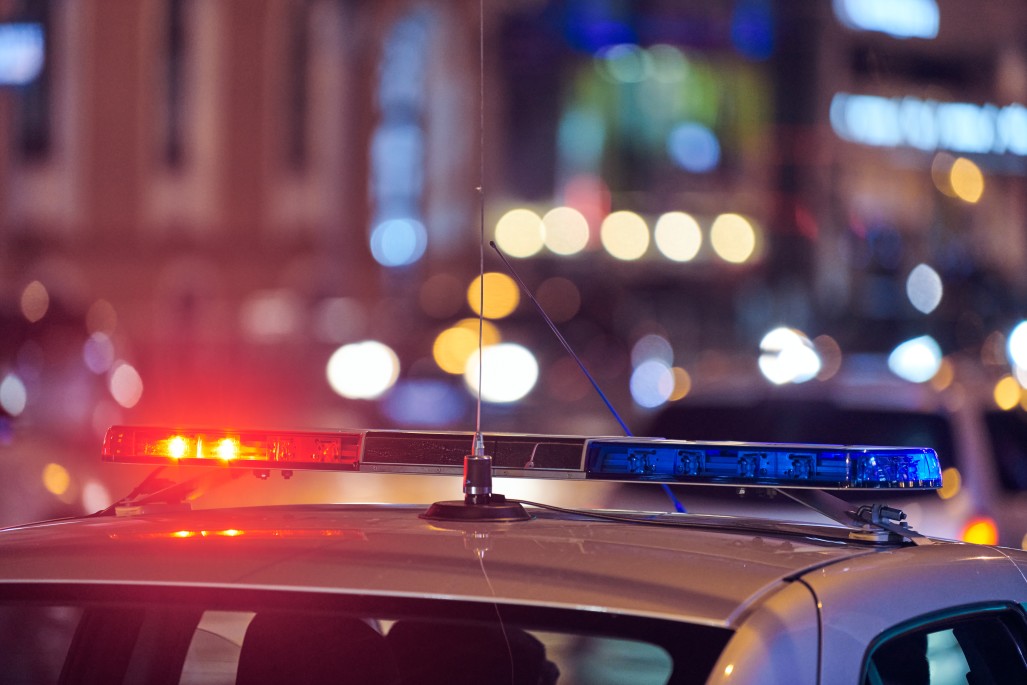[WBHG News 24 – Seattle] – After a January 23 report from the Seattle Office of Police Accountability concluded Officer Daniel Auderer violated SPD’s professionalism and bias-based policing policies while discussing the death of Jaahnavi Kandula, including saying she had “limited value,” SPD leadership has recommended harsh discipline, up to termination.
On the night of January 23, 2023, Officer Kevin Dave was responding to a drug overdose call when he struck 23-year-old college student Jaahnavi Kandula in a marked crosswalk while driving 63 MPH, mortally wounding her. Dave stopped briefly, radioed he hit a pedestrian, and then continued to the cocaine overdose call.
Auderer, a drug recognition officer and vice-president of the Seattle Police Officers Guild, was deployed to evaluate Dave for potential impairment. After conducting his investigation, a two-minute phone conversation with SPOG President Mike Solan was accidentally recorded on Auderer’s bodycam. A whistleblower within SPD found the video and reported it to his chain of command. The video was released to the public on September 11, 2023, sparking international outrage.
The recording only captured Auderer’s side of the conversation. After telling Solan, “She is dead,” he guffawed, then continued to mock Kandula, saying, “She had limited value,” and the city should “Just write a check – $11,000.”
One year to the day after the accident, OPA recommended sustaining the findings that Auderer “violated SPD’s professionalism and bias-based policing policies by laughing about Kandula’s death, describing her as having “limited value,” and making other disparaging remarks.”
OPA Director Gino Betts Jr. called the officer’s words “derogatory, disturbing, and inhumane.”
According to the Seattle Times, a Seattle Police Department Disciplinary Action Report has recommended punishment ranging from a 30-day suspension without pay up to termination. In a commanders’ disciplinary memo sent to Auderer, SPD leadership wrote, “Even crediting your explanation as true, that does not excuse the callousness of your comments.”
Seattle Police Chief Adrian Diaz will meet with Auderer on March 4, where he will be given a final opportunity to explain his conduct.
Kandula was a graduate student from India studying for her master’s degree at Northeastern University’s Seattle campus. Two days after the video release, the Indian Consulate in San Francisco called the video “troubling,” writing on Twitter (also known as X), “Recent reports including in media of the handling of Ms Jaahnavi Kandula’s death in a road accident in Seattle in January are deeply troubling. We have taken up the matter strongly with local authorities in Seattle & Washington State as well as senior officials in Washington DC.”
The U.S. State Department also issued a statement, calling the incident “disturbing.”
At the time of the accident, Dave was driving through a construction zone at 74 MPH with no siren. Kandula attempted to run but had less than one second to react, and an investigation found that Dave had slowed to 63 MPH at the moment of impact. A report released in June 2023 concluded, “Had Ofc. Dave been travelling [sic] 50 MPH or less as he approached the intersection and encountered [sic] and Ofc. DAVE and responded in the same manner; this collision would not have occurred.”
In August, when Auderer learned about the bodycam video, he asked OPA Director Betts Jr. for rapid adjudication. The optional disciplinary review enables a police officer to admit to minor to moderate policy violations and accept “reasonable discipline” without appeal, bypassing a formal OPA investigation. Betts Jr. denied the request, which SPOG decried.
With public outrage growing and a September 21 appeal by Seattle’s Community Police Commission to suspend Auderer indefinitely without pay, SPD administratively re-assigned him to desk duty.
Other statements made by Auderer have raised additional questions about the integrity of SPD’s accident investigation. In the same phone conversation with Solan, he said that Dave was driving no more than 50 MPH, and Kandula was thrown less than 50 feet. A secondary investigation found she was thrown 138 feet. The King County Prosecuting Attorney is considering criminal charges for Dave and has hired an outside consultant to conduct an independent investigation. An announcement is expected in the coming weeks.
Auderer is a 14-year veteran with SPD and no stranger to professional conduct investigations. Since May 2014, he’s been investigated 30 times by the OPA, referred to supervisory reprimand or guidance 11 times, and had allegations of unprofessional conduct sustained three times. His prior actions have cost the City almost $2 million in settlement payments.
SPOG has maintained its defense of its vice president, repeatedly stating that Auderer and Solan were engaged in “gallows humor” and declared, “The video captures only one side of the conversation. There is much more detail and nuance that has not been made public yet… SPOG has full confidence that the civilian led [sic] police accountability system known as the Office of Police Accountability / OPA will conduct a thorough and fair investigation.”
During the civilian-led investigation, Solan was called as the only witness. He has since accused the OPA of “union discrimination,” “intimidation,” and conducting a “fishing expedition” after being asked to meet with investigators for a second time to clarify his earlier testimony.
In his first statement to OPA on September 12, Solan told investigators, “It’s how police are,” adding, “Sometimes officers use sarcasm and humor to overcome emotional hurdles, which can be very burdensome.”
Solan claimed that he only agreed to meet with the OPA a second time after being warned he could face dismissal.
Kandula’s family, who lives in India, has not filed a lawsuit against the city. Northeastern University announced they would issue an honorary master’s degree later this week.
